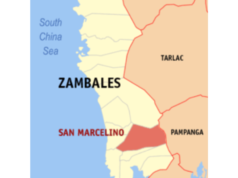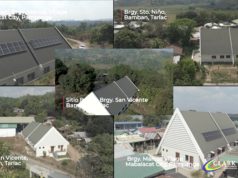In the next few years, Clark Freeport Zone will have a totally different landscape following the scheduled construction of some high-rise buildings within the main zone. Several locators are expected to build these buildings with designs for expansions in accordance with the provisions and specifications of the Civil Aviation Authority of the Philippines (CAAP).
Clark Development Corporation (CDC) recently revealed that 32 building applications were approved by CAAP that which include JB Cresta, CPR Palm Resort, Berthaphil Inc., Sutherland Global Services, CyberCity Teleservices, J&K Global Properties, CAASCI, Oxford Hotel, CEDC, and BBAC.
The issue on high-rise buildings inside the Freeport zone has been argued since 2007 although the restrictions were strictly implemented since Clark was under the administration of the US. Then a team of experts from the International Civil Aviation Organization (ICAO) conducted an aerodrome survey of the Clark airport and identified maximum penetrations limits for height clearances. This is in consideration of Clark airport’s second runway and the proposed third runway.
With this development, we shall expect major changes inside Clark and possibly within its neighboring areas like Angeles City and Mabalacat. Several businessmen and traders around Clark have been waiting for this development in years as they plan to expand operations. Angeles City for example is a fast growing economic center that offers a wide range of sunrise industries related to tourism, education and the four Fs – food, fashion, furniture and fun.
Metro Clark is likewise becoming a competitive hub for other industries like IT services, logistics, retailing, health care and medical tourism. In a recent talk with the Pampanga Chamber of Commerce and Industry, top economist Bernie Villegas gave a positive outlook of the country’s economic growth potential.
Villegas said Clark and Central Luzon have the biggest advantage among all the growing regions in the Philippines because of the available infrastructure like the Subic-Clark-Tarlac Expressway or SCTEx. Instead of sulking on a recession that never really hit the country big time, Villegas said we should be optimistic and work with the projections of experts from all over the world.
Interesting enough, Villegas showed a study putting ASEAN as one of the emerging markets in the next 20 years. Philippines, being one of the ASEAN countries, has huge advantage because of its large population reaching to almost 91 million. The bloating population is not a problem at all, he said. This is actually a plus point because of the fast-growing consumer industry. Like Brazil, Russia, India and China, the 10 ASEAN countries with almost a population of 600 million are seen to emerge as economic giants in the future.
Although as of today, Villegas said the country is doing well as compared to other countries. We are even better than Thailand, he said. Although I would admit that I thought Thailand is far off better than Philippines in terms of tourism, Villegas said that looking at an over-all potential of both countries the country is looking at a better future because of our young population. Most of our residents are young people in the productive age and we will continue to be productive in the coming years ahead. Meanwhile, Thailand has an old population, not mentioning their serious problem on some one million HIV victims.
Among the ASEAN nations, Indonesia and Vietnam are doing good with a strong GDP of 3.6 and 4.5, respectively. Indonesia is seen to increase to 5.0 by 2010 while Vietnam to 6.5. Singapore is suffering on a -5.0 as compared to Philippines with a surprisingly strong GDP of 2.5 and still growing to 3.5 or 4 by 2010.
"There is no reason to be afraid of the future," Villegas said. We have a better standing than most of the nations in Asia.




